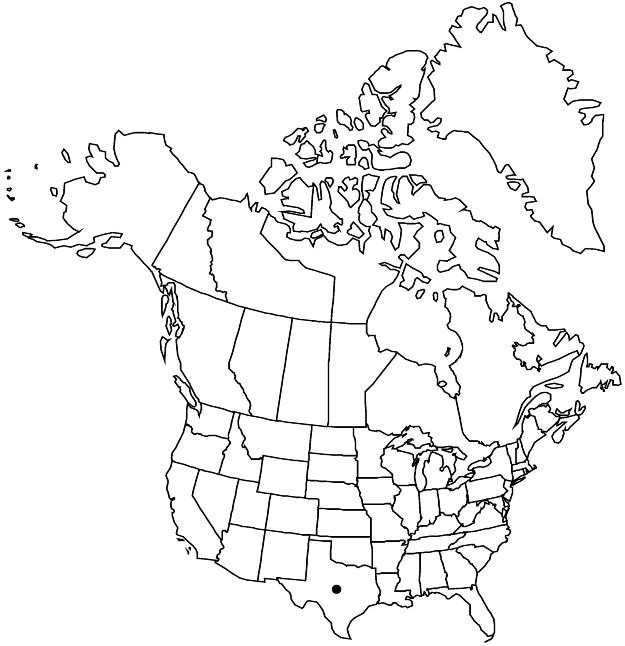Difference between revisions of "Prunus minutiflora"
Boston J. Nat. Hist. 6: 185. 1850.
FNA>Volume Importer |
imported>Volume Importer |
||
| Line 51: | Line 51: | ||
|publication year=1850 | |publication year=1850 | ||
|special status=Endemic | |special status=Endemic | ||
| − | |source xml=https:// | + | |source xml=https://bibilujan@bitbucket.org/aafc-mbb/fna-data-curation.git/src/bb6b7e3a7de7d3b7888a1ad48c7fd8f5c722d8d6/coarse_grained_fna_xml/V9/V9_608.xml |
|subfamily=Rosaceae subfam. Amygdaloideae | |subfamily=Rosaceae subfam. Amygdaloideae | ||
|tribe=Rosaceae tribe Amygdaleae | |tribe=Rosaceae tribe Amygdaleae | ||
Revision as of 00:31, 28 May 2020
Shrubs, suckering, much branched, 10–20 dm, weakly thorny. Twigs with axillary end buds, canescent. Leaves deciduous; petiole 1–2(–6) mm, glabrous, eglandular; blade elliptic or obovate, 0.5–1.6(–3.5) × 0.3–0.8(–2.1) cm, base cuneate, margins usually entire, sometimes irregularly serrulate (sometimes dentate on long shoots), teeth sharp to blunt, eglandular, some callus-tipped, apex usually obtuse to rounded, sometimes apiculate, surfaces glabrous. Inflorescences solitary flowers. Pedicels 0–2 mm, puberulent. Flowers unisexual, plants dioecious, blooming at leaf emergence; hypanthium campanulate, 2–3 mm, glabrous externally; sepals spreading, triangular, 0.7–1.5 mm, margins entire, surfaces glabrous; petals white, obovate, 2–3.5 mm; ovaries hairy. Drupes reddish brown, globose to ovoid, 9–12 mm, puberulent; hypanthium tardily deciduous; mesocarps leathery to dry (slightly splitting); stones ovoid to subglobose, not flattened.
Phenology: Flowering Feb–Mar; fruiting May–Jun.
Habitat: Dry rocky streambeds and uplands, limestone hills, ledges
Elevation: 100–700 m
Discussion
Prunus minutiflora is a rare species limited to central Texas around the Edwards Plateau.
Selected References
None.
